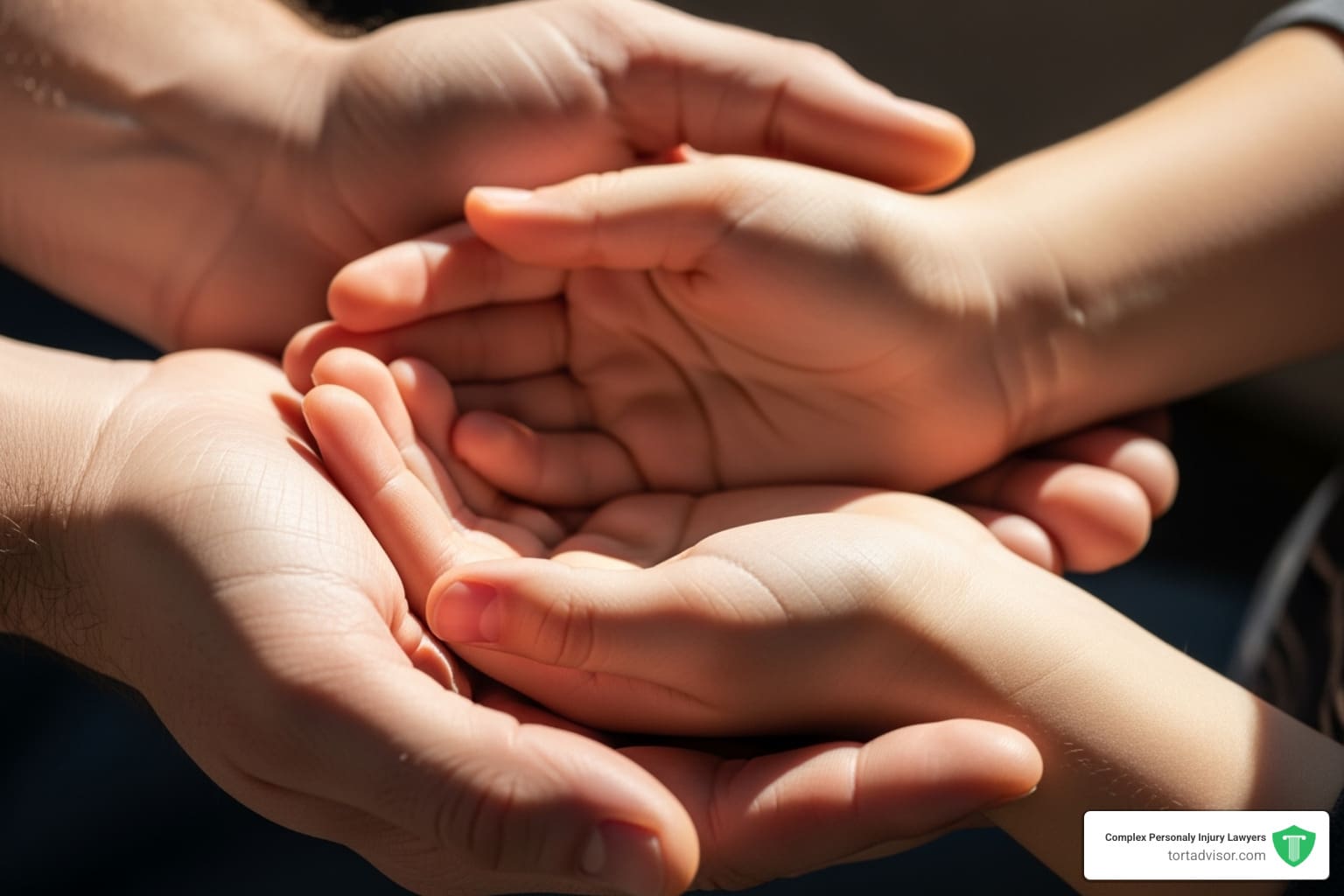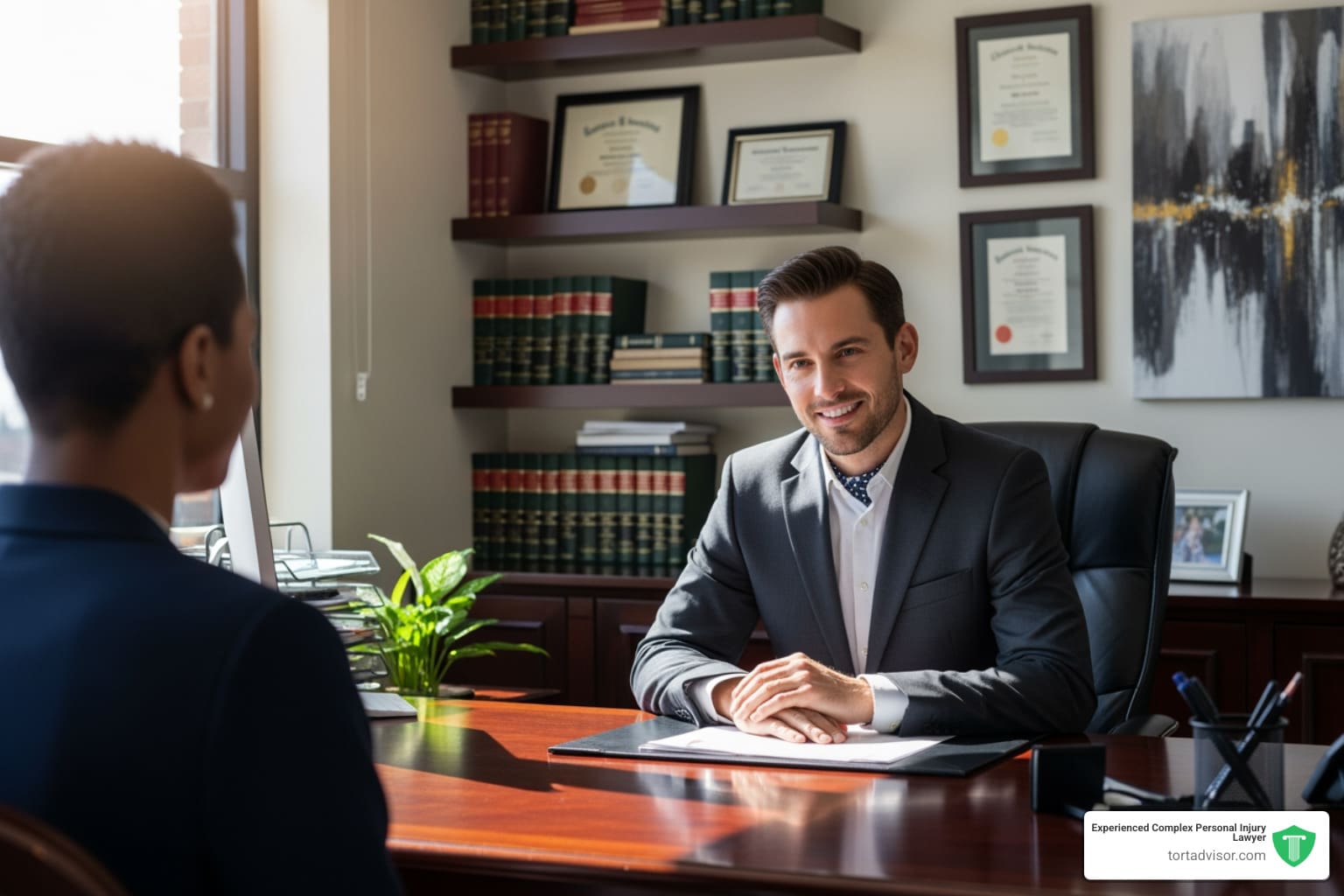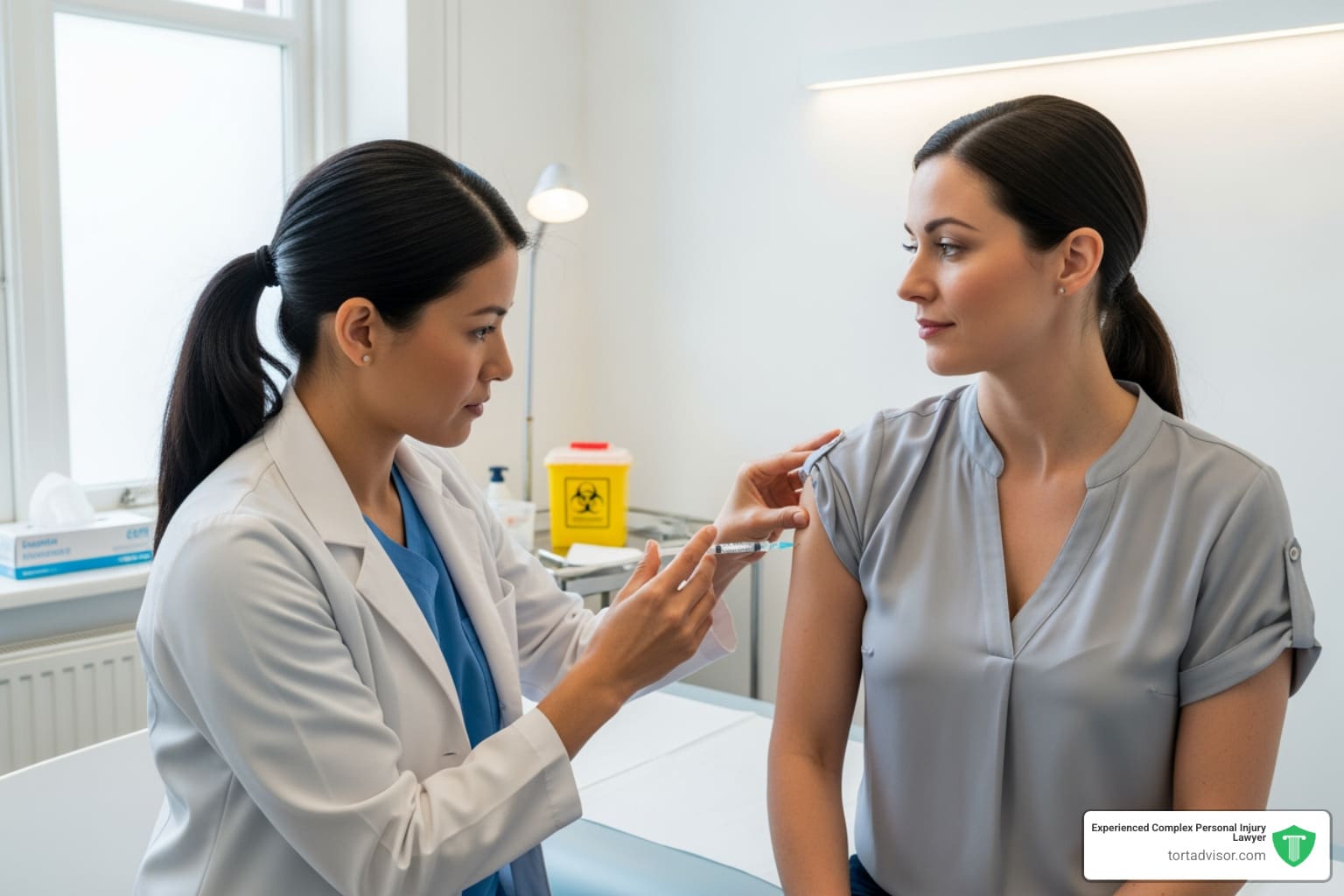


Understanding What COCSA Is and Its Impact on Families
Child-on-Child Sexual Abuse (COCSA) is a serious form of abuse where a minor engages in sexually abusive behavior toward another minor. Key facts include:
- COCSA involves minors: Both the victim and perpetrator are under 18.
- Power imbalances matter: Differences in age, size, or development create unequal dynamics.
- It’s common: Over 70% of child sexual abuse charges involve another youth.
- Family relationships complicate it: Sibling sexual abuse is a common form of intrafamilial abuse.
- Both children need help: The child who caused harm often has their own trauma history.
Unlike normal childhood sexual exploration, COCSA involves coercion, secrecy, or force, creating lasting trauma that requires intervention. The statistics are sobering: at least one-third of child sexual abuse cases involve other children as perpetrators, and victims of sibling abuse face higher risks of depression, eating disorders, and suicidal thoughts.
Early recognition and intervention are crucial to prevent further harm and start the healing process for all children involved.
As Mason Arnao, I’ve helped many families steer complex legal situations involving child sexual abuse. My experience highlights the importance of understanding what is COCSA and its impact on everyone involved.
What is COCSA? A Deeper Look into Child-on-Child Sexual Abuse
Hearing about what is COCSA (Child-on-Child Sexual Abuse) can be overwhelming. It refers to situations where one minor sexually abuses another. This occurs in peer-to-peer relationships and, most commonly, as sibling sexual abuse within families.
When the perpetrator is another child, survivors often feel confused and isolated, as the situation can feel murkier than abuse by an adult. The key to understanding what is COCSA is recognizing the power dynamics at play.
Power imbalances are fundamental to COCSA and can manifest as differences in age, size, strength, developmental stage, or social status. Even a small age gap can create a significant power difference, while a larger child can use physical intimidation. Developmental or social disparities can also be exploited for manipulation.
Coercion and manipulation—including threats, trickery, or emotional pressure—make genuine consent impossible and are hallmarks of this abuse.
For families seeking comprehensive information, the guide Get the Facts About COCSA: Child-on-Child Sexual Abuse provides valuable guidance.
Distinguishing COCSA from Normal Sexual Exploration
Distinguishing what is COCSA from normal childhood curiosity is challenging. While some sexual play is a normal part of development, there is a clear line between healthy exploration and abuse.
The distinction becomes clearer when we compare healthy exploration with abusive behavior:
| Feature | Normal Sexual Play | Harmful Sexual Behavior (COCSA) |
|---|---|---|
| Motivation | Curiosity and innocent learning | Power, control, and domination |
| Participation | Voluntary and mutual | Coerced, forced, or one-sided |
| Power Balance | Equal participation, no intimidation | One child dominates through age, size, or status |
| Secrecy | Open, can be discussed without shame | Hidden, secretive, with threats or fear |
| Emotional Impact | Neutral or mildly curious feelings | Distress, fear, anxiety, shame, or withdrawal |
| Behavior Type | Spontaneous, age-appropriate, easily redirected | Compulsive, adult-like, persistent despite discomfort |
Key indicators of abuse include coercion, significant power differences (age, development), and one child dominating another.
The “Developmental and Harmful Sexual Behaviour Continuum at a Glance” guide offers detailed guidance for parents.
Common Misconceptions and Stigmas
Harmful myths about what is COCSA prevent proper recognition and response. The “kids being kids” mentality is particularly damaging, as it dismisses abusive behavior and allows it to escalate.
Society often minimizes the harm, struggling to see children as abusers. This doubt can be internalized by survivors, who may question their own experiences, leading to confusion and shame that delay healing.
Victim-blaming, through questions like “Why didn’t you tell someone?”, places unfair responsibility on the survivor, amplifying shame and silence.
Sibling sexual abuse is especially complex due to family loyalty and pressure to stay quiet. It may be the most common form of intrafamilial abuse, yet it remains severely underreported.
These misconceptions create barriers to resources and research, making it harder for families and professionals to address COCSA effectively. For those navigating legal complexities, resources like “Personal Injury Lawsuits Explained” can provide context.
Recognizing the Signs and Understanding the Impact
Knowing how to spot the warning signs of what is COCSA is crucial for parents and caregivers. The indicators can be subtle, so paying attention to patterns and trusting your instincts is key. Early recognition is vital to minimize trauma and long-term impact.
Signs and Indicators of COCSA
The signs of COCSA often mirror other forms of child sexual abuse. Look for combinations of these signs, not just isolated incidents:
- Behavioral changes: Sudden secretiveness, withdrawal from activities, increased aggression, or avoiding certain people or places.
- Emotional distress: Unexplained anxiety, sadness, extreme mood swings, or emotional outbursts.
- Regression: Reverting to earlier behaviors like bedwetting or thumb-sucking, which can indicate significant stress.
- Inappropriate sexual knowledge: Displaying sexual knowledge or behavior that is not age-appropriate.
- Physical signs: Unexplained injuries, pain in genital areas, or signs of STIs require immediate medical attention.
- School/social changes: A sudden drop in grades, difficulty concentrating, or dramatic changes in friendships.
While not definitive proof, these signs warrant professional investigation.
Short-Term and Long-Term Effects on Victims
The impact of COCSA is devastating and long-lasting, highlighting the need for early intervention.
Short-term effects often include physical symptoms like illness, poor school performance, mood changes, regressive behaviors, sleep and eating disorders, low self-esteem, nightmares, and self-harm.
Long-term effects can be profound. Psychological trauma like PTSD, anxiety, and depression are common. Victims of sibling abuse are at a higher risk for these issues, as well as substance abuse and suicidal feelings. Survivors often develop trust issues, leading to difficulties with intimacy and forming healthy relationships. Persistent low self-esteem and feelings of worthlessness are also common.
Eating disorders and substance abuse may develop as coping mechanisms, and the risk of suicidal ideation is significantly higher, making professional support essential. An adult’s supportive response to disclosure is crucial for recovery and can significantly reduce trauma.
For more detailed information, the paper “The Traumatic Impact of Child Sexual Abuse” provides valuable insights.
Legal Considerations and Taking Action
When what is COCSA affects your family, the legal landscape is overwhelming. The justice system is not designed for child-on-child abuse, and state laws vary significantly, including the statute of limitations. Your focus must be on protecting your child while seeking support and justice.
Reporting Procedures for COCSA
It’s crucial to know who must report suspected COCSA. Mandatory reporters (teachers, doctors, social workers, law enforcement) are legally required to report any reasonable suspicion of abuse.
Reports are typically made to Child Protective Services (CPS) or local law enforcement. CPS investigates claims and works to ensure the safety of all children involved.
Documenting evidence is vital. Keep detailed, private records of behavioral changes, disclosures, dates, and times to provide to professionals. This information is crucial for them to make informed decisions.
If you’re unsure about needing legal representation, our guide “Do I Need a Personal Injury Lawyer?” can help you understand when professional legal support is necessary.
What should I do if I suspect COCSA?
If you suspect your child has experienced COCSA, your immediate actions are critical for their recovery and safety.
- Prioritize safety: Immediately separate the children involved. This is essential for creating a safe space for healing, even if it’s a difficult decision within a family.
- Listen without judgment: When your child discloses abuse, listen calmly and believe them. Reassure them it’s not their fault. Your response is foundational to their recovery.
- Document observations: Keep private records of behavioral changes, statements, and physical signs with dates and times. This provides crucial information for professionals.
- Seek professional guidance: Contact a trauma-informed therapist specializing in child sexual abuse. They can help your child process the trauma and guide you as a parent.
- Avoid direct confrontation: Do not confront the child who caused harm without professional guidance. A trained professional can facilitate conversations in a way that promotes healing.
Report suspected COCSA to the appropriate authorities. They are trained to handle these sensitive situations and aim to ensure all children receive help and protection.
If you need help finding qualified legal representation, our resource “How to Find a Good Personal Injury Lawyer” offers practical guidance.
Support, Intervention, and Prevention
After a COCSA incident, creating a safe space for healing is paramount. Both the child who was harmed and the one who caused harm need support. Professional help is essential, as this situation is beyond what most parents can handle alone.
Supporting a Child Who Has Been Harmed
Your response to a disclosure is critical. The most important steps are to believe your child, listen without judgment, and let them guide the conversation at their own pace. Repeatedly reassure them it’s not their fault, as the responsibility lies with the child who caused harm.
Trauma-informed therapy is crucial for recovery. A specialist can help your child process the experience and develop coping strategies. Support groups can also reduce feelings of isolation. For immediate help, the RAINN National Sexual Assault Hotline provides 24/7 confidential support.
Addressing a Child Who Has Caused Harm
A difficult truth is that children who cause sexual harm often have their own history of trauma. This doesn’t excuse their actions but provides crucial context for intervention. An immediate professional assessment is the first step to identify underlying issues.
Understanding prior trauma is key. Abuse can lead to “sexual acting out,” where a child recreates their trauma. The focus should be on intervention and rehabilitation, not just punishment. The child must be held accountable, but the goal is to prevent future harm.
Specialized treatment programs for youth with problematic sexual behaviors are effective. They address root causes and teach empathy, with low recidivism rates for those who complete them. Restorative approaches, like those from Hidden Water restorative justice circles, focus on healing for everyone involved.
Prevention: The Role of Parents, Schools, and Communities
Preventing what is COCSA starts with early, age-appropriate conversations about bodies, consent, and boundaries. Body safety education, including correct terminology for body parts, empowers children to speak up if something feels wrong.
Foster open communication so children feel safe discussing uncomfortable topics. Schools need clear policies and training for recognizing and responding to COCSA, along with student education on healthy relationships.
Community awareness programs help reduce stigma. Preventing COCSA requires a collective effort from parents, schools, and communities to break the silence and promote early intervention. Resources like Saprea prevention tools provide valuable materials for families.
Frequently Asked Questions about COCSA
Learning about what is COCSA is overwhelming and raises many questions. Here are answers to some of the most common ones I hear from families.
What is COCSA and how is it defined in cases involving siblings?
COCSA (Child-on-Child Sexual Abuse) between siblings is defined by the same principles as other cases: coercion, secrecy, manipulation, or a power imbalance. Sibling cases are uniquely challenging due to family loyalty and constant proximity, which makes it difficult for a victim to feel safe. Sibling sexual abuse is severely underreported but may be the most common form of intrafamilial abuse. It’s crucial to distinguish this from normal curiosity—secrecy, threats, power differences, and distress are signs of abuse.
Can a child who was a victim of abuse go on to harm another child?
Yes, this can happen and is known as the cycle of abuse. Unresolved trauma can lead to “sexual acting out,” where a child reenacts their abuse or uses sexual behavior to cope. This doesn’t excuse the behavior but is critical for determining the right response. The child who caused harm is often a hurt child needing help to break the cycle. With proper intervention and therapy for both children, this cycle can be broken.
Where can I find support if I was a victim of COCSA?
If you experienced COCSA, know that your experience is valid and help is available. You deserve support. Here are some resources:
- The RAINN National Sexual Assault Hotline (1-800-656-4673) is a great starting point for free, confidential, 24/7 support and local resource connections.
- Survivors of Incest Anonymous offers peer-led support groups for those abused by relatives, which can help with the complex feelings involved.
- Online communities like Our Wave provide safe spaces and specialized resources to connect with other survivors.
Seeking help is a necessary step toward healing. You don’t have to carry this burden alone.
Finding a Path Forward After COCSA
Understanding what is COCSA is the first step toward prevention and healing. Grasping its complexity allows us to respond with the compassion and knowledge both children involved need. The stigma surrounding COCSA often leads to silence, but healing is absolutely possible with the right support and professional guidance.
The child who has been harmed needs belief, validation, and reassurance that it wasn’t their fault. With trauma-informed therapy and family support, they can recover and thrive.
The child who has caused harm needs understanding and intervention, not just punishment, as they often have their own trauma history. Both children deserve support and a chance at a healthier future.
Schools and communities play a vital role in prevention by teaching consent and boundaries, creating safe environments for disclosure, and training adults to recognize warning signs.
Navigating the legal aspects is overwhelming. State laws and the statute of limitations are complex. An experienced attorney can protect your child’s rights and ensure proper intervention happens.
If you are navigating the legal complexities of a COCSA case, the specialized attorneys at Tort Advisor can provide the expertise you need. We understand how sensitive these situations are, and we’re committed to connecting you with legal professionals who have proven results in handling child sexual abuse cases with the care and skill they require.
Healing is possible. Justice is possible. And with the right support, families can find their way through even the most difficult circumstances.
Find expert legal support for a child sexual abuse lawsuit.
Free Confidential Case Evaluation
Complete the short form below to get an immediate FREE case review with an expert in your specific claim. Don't wait, your case could be time sensitive to file a claim.
Related Posts
Did a North Dakota product cause harm? Understand product liability, your rights, and how to take action for defects.
Get justice for clergy abuse. Find an expert Priest abuse lawyer to navigate complex laws and hold institutions accountable.
Diagnosed with meningioma after Depo-Provera? Understand potential Depo-Provera lawsuit settlements, risks, & how to claim compensation.
Uncover the truth about uber sexual assault cases. Learn about the alarming scale, Uber's accountability, and legal options for justice.
Facing wildfire losses? Discover the best wildfire lawsuit attorneys in California to fight for your full recovery and justice.
Exposed to Roundup & diagnosed with NHL? Discover how to sue Monsanto, understand eligibility, & seek compensation. Your guide to justice.









